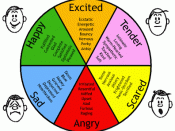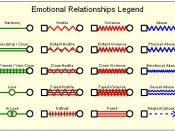Understanding the Role Emotions Play in Negotiation
Fisher and Ury (1991) state that in negotiation "feelings may be more important than talk." The authors go on to describe how in the Middle East emotions of both the Israelis and Palestinians are intense, because of how one perceives the other as a threat to their existence. These powerful emotions make even what seem to be a simple issue, like negotiating the distribution of water along the West Bank, "almost impossible to discuss and resolve". Both the emotional style and emotional intelligence of a negotiator have the potential to greatly affect the outcome of the negotiation itself. Emotional style is described by how a negotiator delivers the packages, or deals, he/she creates (Thompson, 2001). Emotional intelligence is defined as:
the capacity for recognizing our own feelings and those of others, for motivating ourselves, and for managing emotions well in ourselves and in our relationships (Goleman, 1998).
In this paper, I will outline the three basic emotional styles used in negotiations, along with the pros and cons of each. Then, I will expand on the relationship between emotions and negotiation by discussing the five dimensions of emotional intelligence and how they relate to the "art" of negotiation.
Thompson (2001) outlines three distinct emotional styles of negotiation. The first style to discuss is the negative style. The focus of this style is to use "irrational-appearing emotions to intimidate or control the other party." The goal of a negotiator employing this style is to bully the other side into meeting their demands. A successful negative style negotiator is able to "induce fear in their opponent" that he/she would rather walk away empty handed, "than settle for anything less than desired" (Thompson, 2001). This style is most applicable to distributive negotiations that have little or no...


